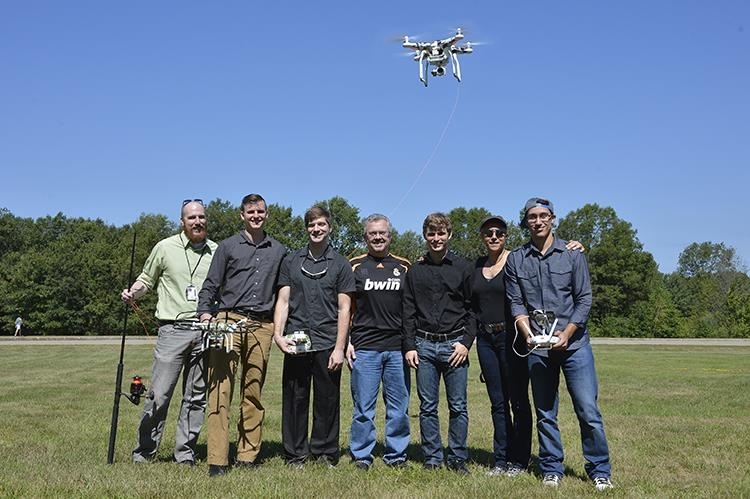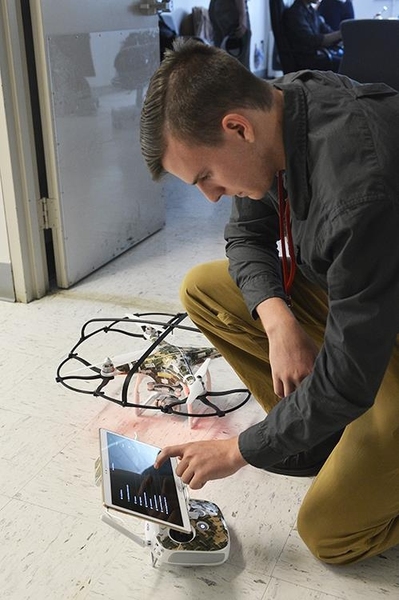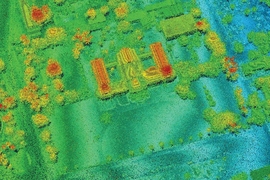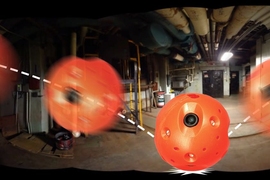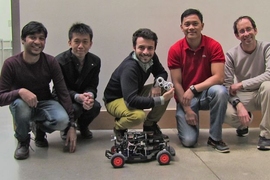"Right now when a firefighter in New York goes into a subway tunnel, he can go 15 feet in and is out of communication range. Nobody knows whether he's alive, whether he's safe, or whether he has oxygen," says Amna Greaves, a technical staff member in the MIT Lincoln Laboratory Humanitarian Assistance and Disaster Relief (HADR) Systems Group. This description highlights the need for tools that improve the communications, and consequently the safety, of first responders. Since last year, Greaves and her team have been working with the Department of Homeland Security Science and Technology Directorate (S&T) First Responder Group's cutting-edge Next Generation First Responder (NGFR) Apex Program to actively address this need with innovative technology that will provide response teams with situational awareness when traditional communications are restricted or disabled. The goal is to research and develop various solutions to problems faced by first responders in emergency operations.
Using both commercial and custom components, Lincoln Laboratory's prototype NGFR sensor system integrates new capabilities, such as drone operations and indoor position tracking, and new devices, such as body sensors and heads-up displays, with the Next-Generation Incident Command System (NICS), a command-and-control architecture developed by the Laboratory in collaboration with S&T to provide decision support to first responders. "NGFR will enable lighter, more capable equipment that will provide greater situational awareness than what responders have today," Greaves says.
With smartphones, responders have access to a powerful computer that has potential far beyond smartphones' conventional uses. Michael Flood, a developer who worked on the initial NICS mobile application, explained that this application could be leveraged to provide new capabilities for first responders in the field. For example, Lincoln Laboratory's NGFR-enhanced version of the mobile app utilizes the Sony Smart Eyeglass to take data from wearable sensors that read a responder's breathing rate, heart rate, and skin temperature and then display it via the laboratory's sensor system to the incident commander who can then determine if an individual needs assistance. This capability could help alleviate the risk for heart attack and physical injury posed by the more than 80 pounds of gear that firefighters carry when responding to events.
The Sensing Location via Exterior Drone (SLED) technology, which quickly assesses a room or area for dangerous obstacles, also links to the responder's smartphone. This small remotely-piloted aircraft system provides both exterior and interior imagery. The drone takes pictures of an entire floor to allow commanders to use their phones to access a visualization of a building's state before they send in a responder. Greaves pointed to the cross-functional expertise needed to develop SLED: "Packaging sensors for flight on an indoor-capable drone required a collaboration of aero, electrical, controls, and mechanical engineers and physicists."
Complementing SLED is the Bluetooth Indoor Proximity System (BLIPS) that uses beacons to track first responders' progress through indoor spaces. As first responders move through a building, they can throw down beacons that then provide a visual depiction of beacon locations on a Web-based interface, a mobile phone, and the SmartGlass display. BLIPS allows the response team to estimate responders' locations through their proximity to the beacons. Outfitting BLIPS with Bluetooth and Wi-Fi capability became a learning experience for James Hanford and Sage Trudeau, two co-operative education students from Rensselaer Polytechnic Institute who were working with Lincoln Laboratory's NGFR team. "Every step required a completely new skill set, so I had to pick up a number of new programming languages and learn new platforms," Hanford says.
The team is consistently enhancing the capabilities of the technologies Lincoln Laboratory is developing for S&T’s NGFR Apex Program. A new addition to the NGFR suite of tools is Myo's hands-free controller that reads the electrical activity of forearm muscle movements and hand gestures to direct drones. This commercial armband was added to the system to lighten first responders' equipment and streamline operations.
Greaves has high hopes for the NGFR program and believes that the project will help save lives, lower operating costs, and prevent injuries: "Lincoln Laboratory's involvement with S&T's NGFR Apex program is a prime example of the laboratory’s homeland protection mission in action: creating prototypes with the ultimate goal of improving the capabilities of our first responders through the transfer of technology."
